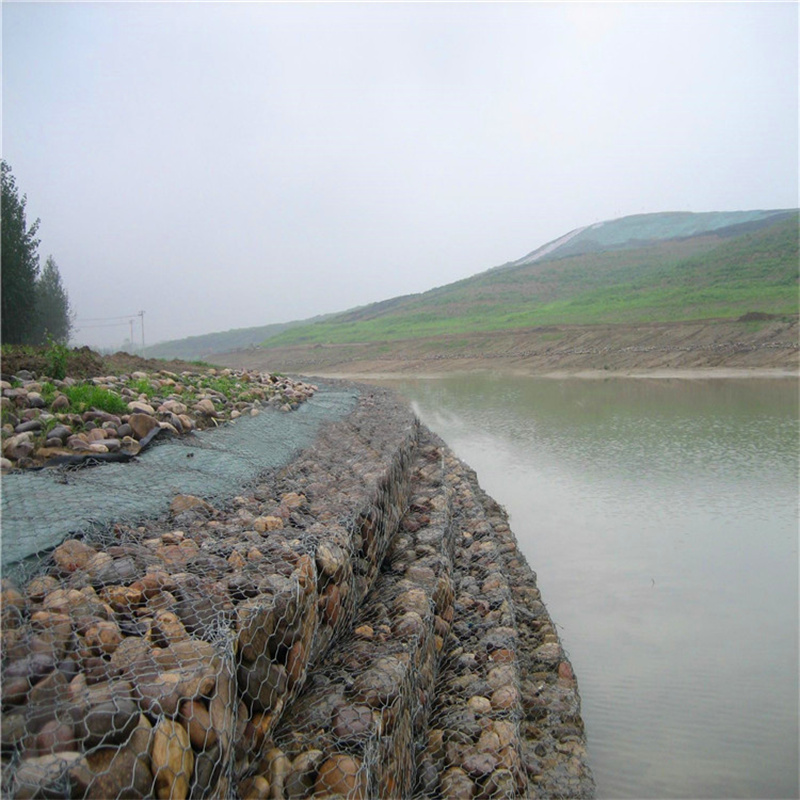Nov . 07, 2024 05:54 Back to list
Innovative Gabion Structures for Sustainable Bridge Design and Construction
The Gabion Bridge Innovation in Sustainable Infrastructure
In the realm of civil engineering, the gabion bridge stands out as an innovative solution that combines functionality with sustainability. Gabions—wiring baskets filled with stones—are traditionally used for erosion control, slope stabilization, and other civil engineering applications. However, their application in bridge construction presents an exciting opportunity that reflects modern engineering principles while emphasizing environmental responsibility.
A Blend of Engineering and Nature
Gabion bridges are primarily constructed using steel wire mesh filled with rocks, gravel, or other natural materials. This blend of man-made and natural components allows for a unique aesthetic that harmonizes with the surrounding environment. As nature enthusiasts project a vision of blending infrastructure with the ecosystem, gabion bridges serve as a testament to that vision—promoting not just connectivity but also ecological harmony.
The versatility of gabion structures allows them to adapt to varying terrains and environmental conditions. They can be designed to fit seamlessly into rural landscapes, making them particularly appealing for hiking trails, parks, and low-traffic areas. The natural appearance of these bridges often contrasts with the starkness of conventional concrete or steel bridges, leading to a more appealing visual experience for users. Moreover, the fact that gabions use locally sourced materials means that their ecological footprint is substantially lower than that of traditional materials, promoting sustainability in construction.
The Benefits of Gabion Bridges
The advantages of gabion bridges extend beyond aesthetics. One of the most significant benefits is their excellent drainage capacity. Water can freely flow through the gaps in the stones, reducing the risk of flooding both above and below the structure. This natural drainage system mitigates the effects of heavy rainfall and provides a solution to erosion issues often faced by traditional bridges, which can become structurally compromised over time.
Additionally, gabion bridges are relatively easy to construct. Their modular design allows for flexibility in terms of scale and complexity. Construction crews can assemble these structures quickly, which reduces labor costs and minimizes disruption to the surrounding environment. Furthermore, the materials used are often locally sourced, reducing transportation emissions and contributing to local economies.
Another noteworthy aspect is their durability. Gabions are known for their resilience against extreme weather conditions, and their natural fill materials can withstand significant stress without compromising structural integrity. This reduces the frequency and cost of maintenance compared to conventional bridge designs, making gabion bridges a sound investment for communities.
gabion bridge

Environmental Impact
The environmental benefits of gabion bridges cannot be overstated. By using natural materials and promoting biodiversity, they lead to minimal disruption to local ecosystems. The porous nature of gabion structures enhances soil stability and encourages vegetation growth, promoting a healthy habitat for local wildlife.
Moreover, gabion bridges can play a crucial role in sustainable transportation. In areas where communities prioritize eco-friendliness, these structures can facilitate non-motorized transportation such as biking or walking, reducing reliance on fossil fuels and contributing to lower carbon footprints.
Challenges and Considerations
Despite their numerous advantages, gabion bridges are not without challenges. For instance, proper design and placement are critical to ensure structural stability, particularly in areas experiencing heavy rainfall or significant weight loads. Additionally, the aesthetics of gabion bridges might not appeal to all communities, which can pose challenges in gaining public approval.
Nonetheless, as awareness about ecological sustainability grows, the gabion bridge emerges as a forward-thinking solution in bridge construction. Its practical benefits combined with its minimal environmental impact make it an attractive alternative for modern infrastructure projects.
Conclusion
In conclusion, gabion bridges signify a promising advancement in civil engineering that showcases the potential of sustainable practices in infrastructure development. With their unique aesthetic, eco-friendly materials, and numerous functional benefits, they offer an innovative approach to bridge construction. As society continues to look for ways to harmonize progress with nature, gabion bridges undoubtedly hold a significant place in the future of sustainable infrastructure.
-
HESCO Gabion Baskets for Coastal Erosion Prevention
NewsAug.22,2025
-
Longevity and Durability of River Rock Gabion Walls
NewsAug.22,2025
-
How to Integrate Gabion 3D Walls in Urban Planning
NewsAug.22,2025
-
Reno Mattress Gabion Applications in Civil Engineering
NewsAug.22,2025
-
How to Install Wire Mesh for Gabion Baskets Properly
NewsAug.22,2025
-
Best Materials for Filling a Chain Link Gabion
NewsAug.22,2025
-
Wire Mesh Thickness Impact on Gabion Wall Load Bearing
NewsAug.12,2025






